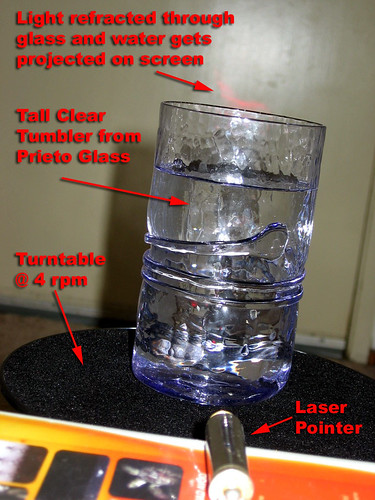Photo is from Yale University manuscripts and Archives Digital Images Database
© 2000-2008, Yale University Library.
images.library.yale.edu/madid/oneItem.aspx?id=996090&...
Caption:
"The instrument works, yet I cannot get on the screen just the form development I want"" so the artist and the mechanic get together in the laboratory for a fresh start. The building of suitable light-projectors is a task requiring great patience and vision. "...............................................
From classes.design.ucla.edu/Fall04/101C/lecture3.htm
Thomas Wilfred (1889-1968)
Danish musician, moved to the United States as a young man. Invented Lumia, the art of painting with light; founded the Art institute of light in New York.
"More and more artists of our generation have begun to contemplate light with the eyes of a sculptor gazing upon a block of marble - seeing in light a new and basic medium of expression with unlimited possibilities" (Wilfred)
Created light art instruments known as “Clavilux”. Many models for different purposes, the earliest was a large “color piano” to be used in large performances. Also “Table Model Clavilux”, “Clavilux Junior”, “Clavilux Silent Visual Carillon”. Clavilux Junior was a proto-interactive device for the home, resembling a television set, but showing abstract light compositions. It could be controlled by a wried remote-controller.
Wilfred areated large-scale “passive mode” moving light compositions (animated “with internally programmed instruments”), like Lumia Suite (MOMA, 1963-64). Influenced many others, including kinetic artists like Frank Malina.
...........................................
More Thomas Wilfred information: a beautiful page by Richard Edgar Løvstrøm including a brief biography, description of the machines, photos and helpful links to further resources here: www.gis.net/~scatt/clavilux/clavilux.html
"Light is the artist's sole medium of expression. He must mold it by optical means, almost as a sculptor models clay. He must add colour, and finally motion to his creation. Motion, the time dimension, demands that he must be a choreographer in space.
Thomas Wilfred"
See a loving appreciation of Wilfred's work, by Eugene Epstein
www.lumia-wilfred.org/index.html
The following image from Mr Epstein's website is copyrighted © by Eugene Epstein, 2008. It's from "Untitled," Opus 161, a 22-month-long composition created in 1965/66 by Thomas Wilfred.
An animated sequence of images from this piece can be seen here:
http://www.clavilux.org/op161/slideshow.swf
.............................................................
Here's a Time Magazine review of a clavilux concert in 1925.
I think of Wilfred as a beautiful nut, and identify with him as such. Here's his tabulation of a survey that he conducted of his audiences of his concerts.
Photo is from Yale University manuscripts and Archives Digital Images Database
© 2000-2008, Yale University Library.
I just love that.
All of this by way of leading in to my recent video work. I've been doing some abstract stuff made of light. Unlike Wilfred, I've got access to lasers and video editing software. I don't have that intense,bug-eyed assistant guy, though.
Here's my set-up:
So the light from the laser-pointer gets refracted through the funky texture of the hand-blown glass tumbler (available from Esteban Prieto, Prieto Glass, 3264 Big Bend Blvd, St Louis, MO) onto the projection screen (the inside of the door to our apartment) and tghe image is recorded b y the video camera. The light changes shape because the tumbler is on a turntable. A slow turntable, slowest one I could find, but not really slow enough.

...and after a slew of video processing, this is what you get:
As I wrote to Eugene Epstein,I think I remember seeing one of Wilfred's pieces at a show called Electronic/Minimal at the Milwaukee Art Center in the late 60's. I liked the idea of a piece of art which, every time you looked at it, it would be different.




No comments:
Post a Comment